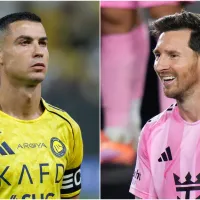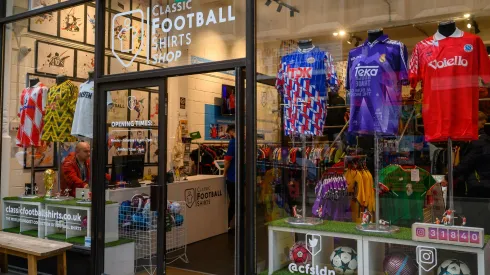Soccer, it’s a pretty special game, one that at its core has at large remained the same for decades. There have been advances here and there, but the crux of eleven players in cleats, shorts, and shirts, kicking a ball around a grass pitch has never changed. Yet, despite that, things have changed, both in life and in soccer. So too has the rise in popularity of classic soccer shirts.
In the modern day, in the modern game, things change at a rapid rate. From league-formatted European competitions, VAR, the Jabulani and Alberto Aquilani, players, rules, kits and balls all come and go. Naturally, this has left many to think back on the years that have passed with a longing to bring back what elements they can to today’s game, and where better to do that than with the buying of vintage soccer shirts.
The Incredible Story of Classic Football Shirts
Over the last week Classic Football Shirts, the premier name in the vintage kit game, celebrated its 18th birthday. The biggest vintage soccer shirt sellers in the world, in 2013 had little more than 10,000 followers on Twitter, today they have over half a million. On Instagram, the numbers are even greater, with over 1.2 million followers.
Alongside the increased audience, they have stores in two of England’s biggest cities, London and Manchester, with a third in Los Angeles on the way. The group has worked in collaboration with TNT Sports and just days ago announced an investment from both Rob McElhenney, Alex Morgan and Stu Holden.
Speaking on his X page on his investment, Holden said he was, “Looking forward to being a part of their continued growth in North America.”
That growth goes beyond just Classic Football Shirts. The group from Manchester may be the pinnacle, their rise has undoubtedly been monumental, and as they stand, they are the biggest wolf in the pack… But their story in many ways represents the rise of the wider retro soccer shirt community as a whole.”
One of the members of that community is Tom (El Clasico Kits). For several years, Tom ran a successful vintage shirt-selling website, sourcing and selling shirts from across the globe. In that time, he grew not only his collection but also became part of a community that has continued to blossom.
Speaking with World Soccer Talk, he revealed it’s more than just nostalgia that has people yearning for the vintage sports clothes of yesteryear:
“Things were built differently then as well, the shirts, jackets and shorts,” Tom explained. “They were made to last, as well as just being more than sportswear.
“I’m in my 20s, me and my mates aren’t organizing a kickabout down the park and I couldn’t wear a new shirt out for drinks. Modern shirts can only be worn in so many places, vintage gear is the opposite.”

As mentioned, for Tom, it was more than just buying for him to wear or collect, he became part of a community – something unlikely to be replicated with modern shirts alone:
“I’ve met so many people through being part of the community,” Tom told World Soccer Talk. “As a seller, I traveled to pop-up shops around the country, but past that, I’ve made so many mates from it. From selling shirts alone I’ve become friends with people I have since gone on holiday with and gone to games with.”
Explained: Why people go for classic soccer shirts over recent
“Through selling I encountered so many people buying for so many different reasons,” Tom added, rounding off his talk with us. “Some just wanted to collect the shirts, to say they had them. I also think a lot of people just weren’t comfortable paying for the price of modern shirts.”
It’s true what Tom says, soccer shirts have seen their prices skyrocket in recent years. With almost every major club producing three if not more new shirts each year, there is a push from massive sportswear companies for you to spend your dollar with them, a strategy that at large is working. Earlier this year, ESPN reported that over the last four years, revenue from the sale of soccer kits has risen by roughly 60%, a number pushed on by the increase in prices.
This has got so out of hand, that if you were to purchase the ‘authentic’ version of Manchester United’s home shirt straight from their website, it would cost you $144. For a kid’s shirt, it will cost you half of that at $72. That means for a family of four it will set you back an eye-watering $432, a fee that for reference is more than a return flight between London and Orlando.
As Tom said, the appeal of buying vintage shirts comes from the two things it offers the most, community and frequently affordability. Two things that are more and more becoming sorely missing from the soccer of the modern day.
Photo: IMAGO / Camera4














